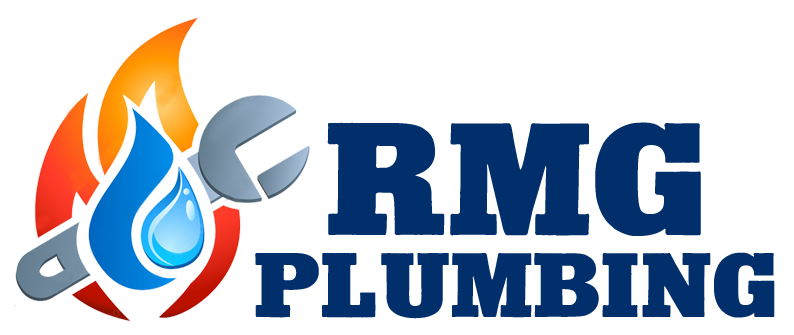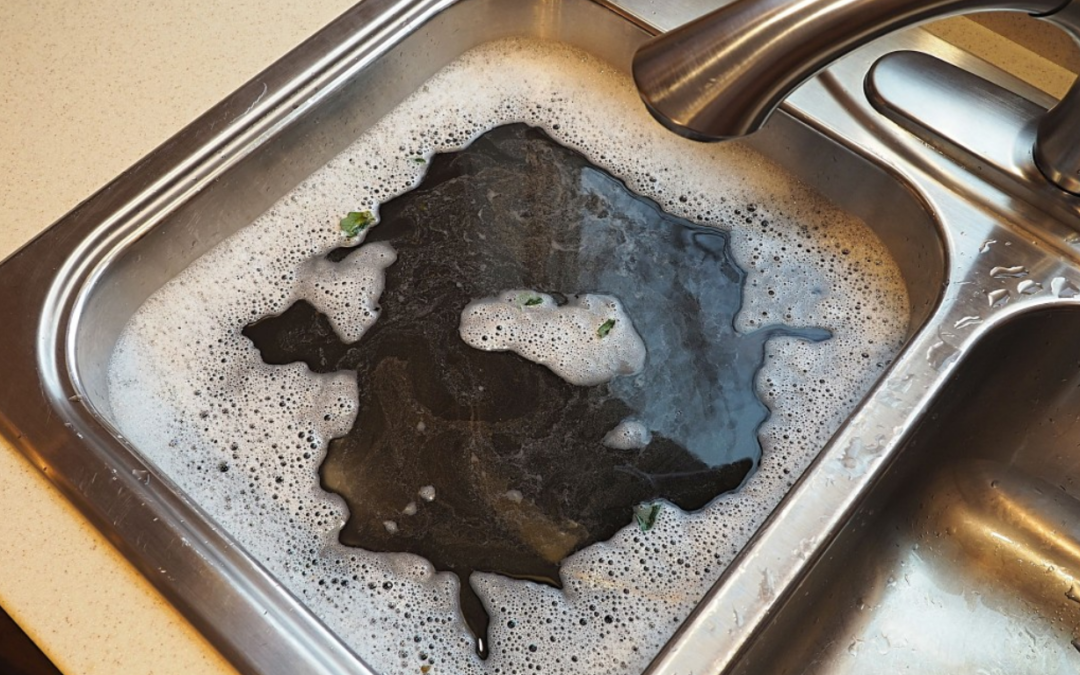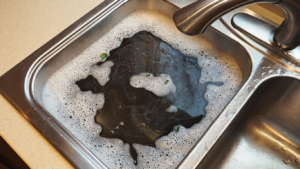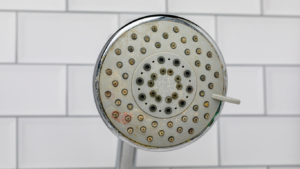A clogged sink can be a frustrating household problem, causing water to drain slowly or not at all. Whether it’s a bathroom or kitchen sink, clogs are usually caused by grease, soap scum, food debris, or hair buildup. The good news is that most clogs can be fixed without calling a plumber using simple tools and techniques. In this guide, you’ll learn how to fix a clogged sink step by step, using both natural and mechanical methods. Follow these tips to get your sink draining properly again.
Common Causes of a Clogged Sink
Before jumping into the solutions, understanding the most common causes of sink clogs can help prevent future blockages.
1. Kitchen Sink Clogs
- Food debris: Leftover food particles, especially coffee grounds and eggshells, can build up in pipes.
- Grease and oil: Cooking fats harden in pipes, restricting water flow.
- Soap scum: When combined with minerals in hard water, soap scum creates stubborn clogs.
2. Bathroom Sink Clogs
- Hair: The leading cause of bathroom sink clogs, often mixed with soap residue.
- Soap and toothpaste residue: Thick, sticky toothpaste and soap deposits accumulate over time.
- Foreign objects: Jewelry, cotton swabs, or small caps can accidentally enter the drain.
Now that you know what causes the problem, let’s go through the best ways to fix a clogged sink.
Step-by-Step Guide to Fix a Clogged Sink
Step 1: Remove Visible Debris from the Drain
Before using any tools or solutions, check if the blockage is caused by visible debris.
- Remove the sink stopper or drain cover.
- Use a flashlight to look inside the drain for any visible blockage.
- Wear gloves and remove any accumulated gunk or hair using your fingers or tweezers.
If the sink is still clogged, proceed to the next steps.
Step 2: Use Boiling Water to Dissolve the Clog
Boiling water is a simple and effective way to clear minor clogs caused by grease or soap residue.
- Bring a full pot of water to a rolling boil.
- Carefully pour the hot water down the drain in two or three stages.
- Wait a few minutes and test if the water drains properly.
If boiling water doesn’t fix the clogged sink, move to the next method.
Step 3: Try a Baking Soda and Vinegar Solution
This natural solution can help break down grease, soap scum, and small blockages.
- Pour ½ cup of baking soda into the drain.
- Add 1 cup of white vinegar immediately after.
- Let the mixture fizz and sit for 15 to 20 minutes to break down the clog.
- Flush the drain with hot water.
This method is environmentally friendly and safe for pipes, making it an excellent alternative to chemical drain cleaners.
Step 4: Use a Plunger
A plunger can create suction to dislodge stubborn clogs deep in the pipes.
- Fill the sink with enough water to cover the plunger’s rubber cup.
- Place the plunger over the drain, ensuring a tight seal.
- Plunge up and down vigorously for about 30 seconds.
- Remove the plunger and check if the water drains.
Repeat a few times if necessary until the clog is cleared.
Step 5: Use a Drain Snake or Wire Hanger
A drain snake (plumber’s auger) or an unfolded wire hanger can remove deep clogs.
- Insert the drain snake into the sink drain.
- Rotate the handle and push the snake further down to break up the clog.
- Pull out the snake slowly to remove debris.
- Run hot water to flush out any remaining residue.
This method is highly effective for hair or solid obstructions.
Step 6: Clean the P-Trap
The P-trap is the curved pipe under the sink that traps debris before it reaches the main plumbing system.
- Place a bucket under the P-trap to catch any water.
- Use a wrench to unscrew the P-trap.
- Remove any trapped gunk and rinse the pipe with hot water.
- Reattach the P-trap and test the drain.
Cleaning the P-trap should resolve persistent clogs that other methods fail to fix.
When to Call a Plumber
If you have tried all these methods and the sink is still clogged, it may be time to call a professional plumber.
Signs that indicate a more serious plumbing issue include:
- Multiple drains in your home are clogged.
- Water backs up into other fixtures (e.g., toilet or bathtub).
- There is a foul smell coming from the drain.
- The clog returns quickly after being cleared.
A plumber can inspect for deep pipe blockages, tree root intrusion, or pipe damage.
Preventing Future Sink Clogs
To avoid dealing with a clogged sink in the future, follow these prevention tips:
✔ Use a drain cover or strainer to catch food particles and hair.
✔ Never pour grease or oil down the drain—dispose of it in a container.
✔ Run hot water after each use to prevent buildup.
✔ Use baking soda and vinegar monthly as a preventive cleaning method.
✔ Avoid flushing coffee grounds, eggshells, or fibrous foods down the sink.
By following these simple habits, you can keep your sink clog-free and prevent costly plumbing repairs.
Final Thoughts
A clogged sink is a common issue, but most blockages can be fixed using simple DIY methods. Whether you use boiling water, a plunger, a drain snake, or a baking soda solution, these steps can help you fix a clogged sink quickly and effectively.
For severe blockages or recurring problems, professional help may be necessary. However, with regular maintenance and good habits, you can keep your sink draining smoothly and avoid future plumbing headaches.




